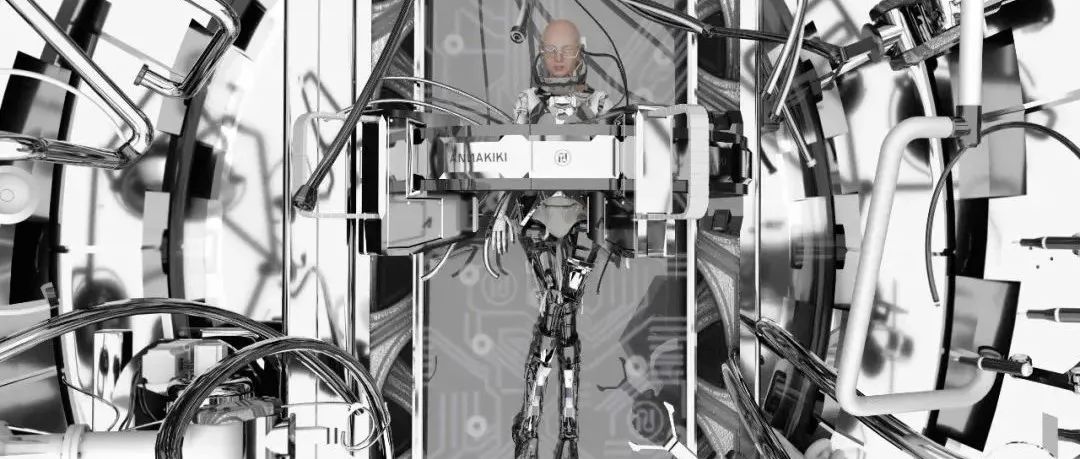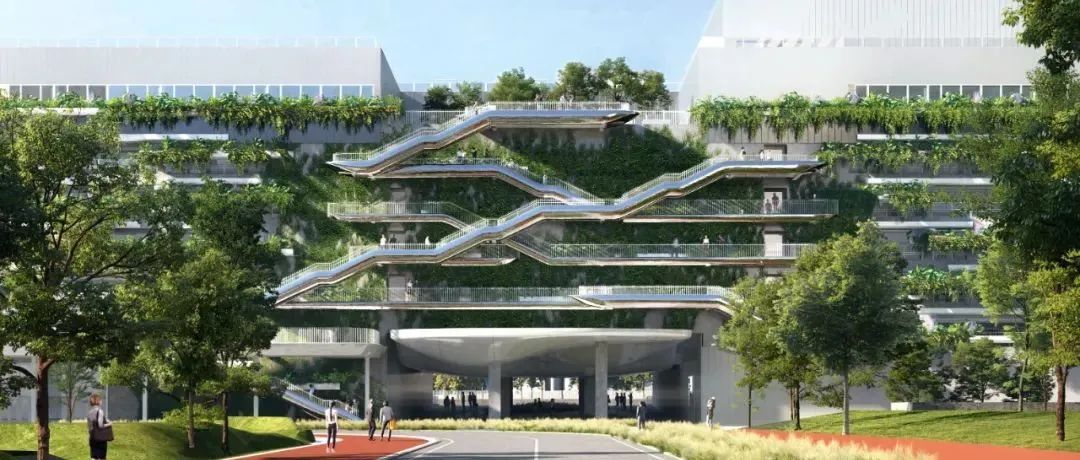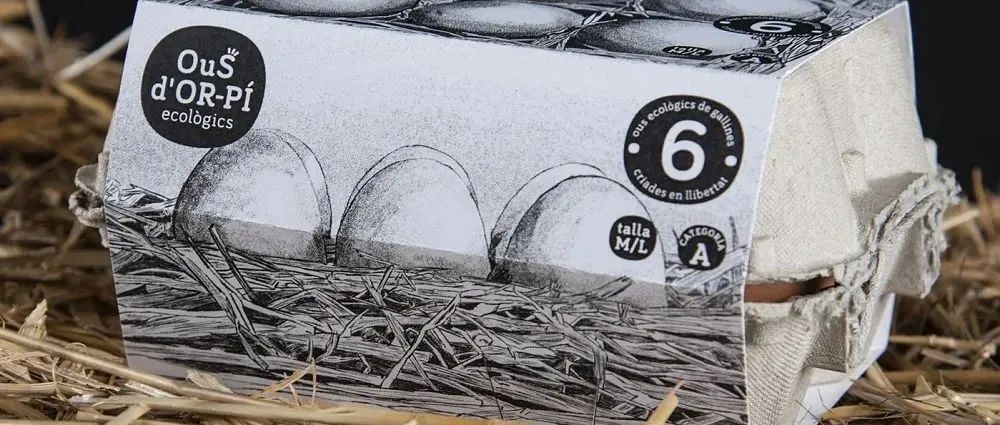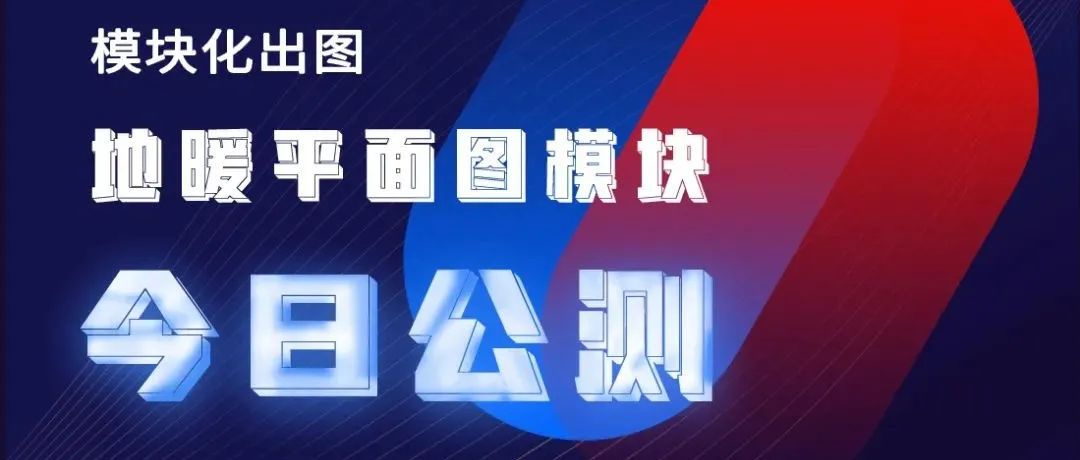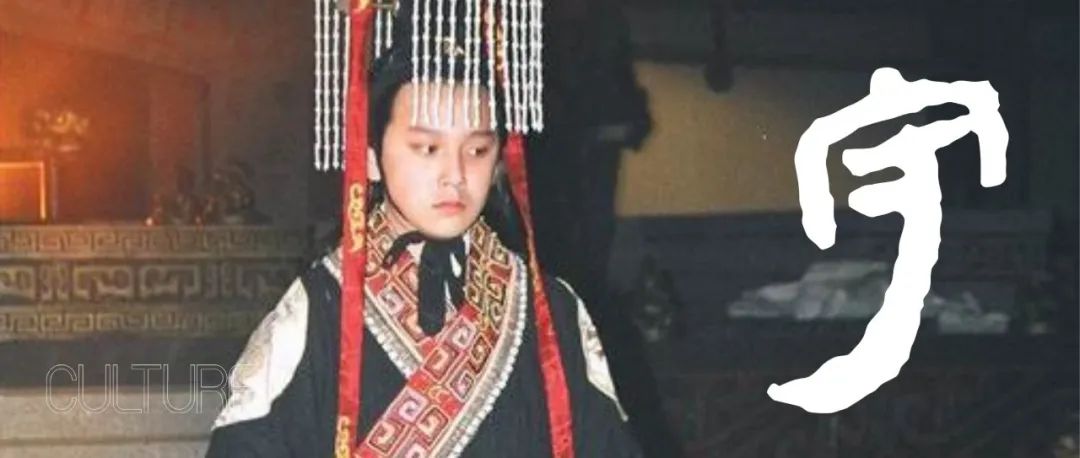图片 Image: ©MVRDV
项目位于彰化沿海的彰滨工业区,其主要用途是为离岸风电可持续能源设备提供储存与维护空间
Located at the Changhua Coastal Industrial Park, near to Taichung, the building’s primary purpose is for the storage and maintenance of sustainable energy equipment
MVRDV has revealed Sun Rock, an operations containing offices, a maintenance workshop, storage spaces, and a public gallery for Taiwan’s government-owned power company Taipower. Anticipating the company's planned transition to green energy, the features of the Sun Rock building, from its shape to its façade, are focused upon generating solar energy as efficiently as possible. The building therefore acts as a definitive statement of intention, and a “manifesto in a building” to communicate Taipower’s goals to the public.
图片 Image: © MVRDV
呼应企业对于绿色转型的决心,“光能之石”运维中心的设计致力于如何将太阳能发电效率最大化
Anticipating the company's planned transition to green energy, the features of the Sun Rock building are focused upon generating solar energy as efficiently as possible
Located at the Changhua Coastal Industrial Park, near to Taichung, the building’s primary purpose is for the storage and maintenance of sustainable energy equipment. The site for Taipower’s new facility receives a significant amount of solar exposure throughout the year, and so the rounded shape of Sun Rock is designed to maximise how much of that sunlight can be harnessed for energy. On the southern side, the building slopes gently downwards, creating a large surface area that directly faces the sun during the middle of the day. At the northern end, the domed shape maximises the area of the building exposed to the sun.
The façade maximises this solar potential with a series of pleats, which support photovoltaic panels (mixed in with windows, where required) on their upper surface. The angle of these pleats is adjusted on all parts of the façade to maximise the energy-generating potential of the solar panels. As a result of these measures, the building can support at least 4,000 square metres of PV panels that would generate almost 1 million kilowatt-hours of clean energy per year – an amount of energy equivalent to burning 85 tonnes of crude oil – and making the building completely self-sufficient. Further design options are under consideration that would add an even larger area of PV panels, with calculations showing the building could generate up to 1.7 millionk Wh annually to contribute energy to the grid.
“We aim to make all o four projects sustainable, but this project provided a unique and fascinating challenge”, says MVRDV founding partner Winy Maas. “The design required a hyper-specific focus, pushing the boundaries of one component of architectural sustainability – green energy – to its absolute limit. As a result, our designis completely data-driven. It’s always fun to see the results when you let analysis be the determining part of the design.”
At the heart of the building is the Data Room, a soaring atrium with real-time displays of data about Taipower’s operations and the amount of renewable energy the company generates. On the first floor, a gallery space provides a view onto the maintenance workshop, allowing the public an up-close look at the machines that make sustainable energy possible, from solar panels to massive wind turbine blades. A further gallery for exhibitions is included on the top floor, while at roof level, under the shelter of a dome of solar panels, is a terrace complete with trees for both visitors and Taipower employees to relax.
图片 Image: © MVRDV
从二层的展览空间能够看到维修工厂内的活动,公众可以近距离观察绿能产业机器的日常维护作业
A gallery space provides a view onto the maintenance workshop, allowing the public an up-close look at the machines that make sustainable energy possible
The sustainable energy-generating features of Sun Rock make the building more than simply an operations and maintenance facility; the design cleverly combines the building’s utilitarian spaces with aseries of gallery spaces. The building is thus also an important communication tool for Taipower to publicly show their ambitions for a greener future.
Early projects by the office, such as the headquarters for the Dutch Public Broadcaster VPRO and WoZoCo housing for the elderly in Amsterdam lead to international acclaim. 250 architects, designers and other staff develop projects in a multi-disciplinary, collaborative design process which involves rigorous technical and creative investigation. MVRDV works with BIM and has official in-house BREEAM and LEED assessors. Together with Delft University of Technology, MVRDV runs The Why Factory, an independent think tank and research institute providing an agenda for architecture and urbanism by envisioning the city of the future.
本文来自微信公众号“MVRDV”(ID:MVRDV_China)。大作社经授权转载,该文观点仅代表作者本人,大作社平台仅提供信息存储空间服务。




